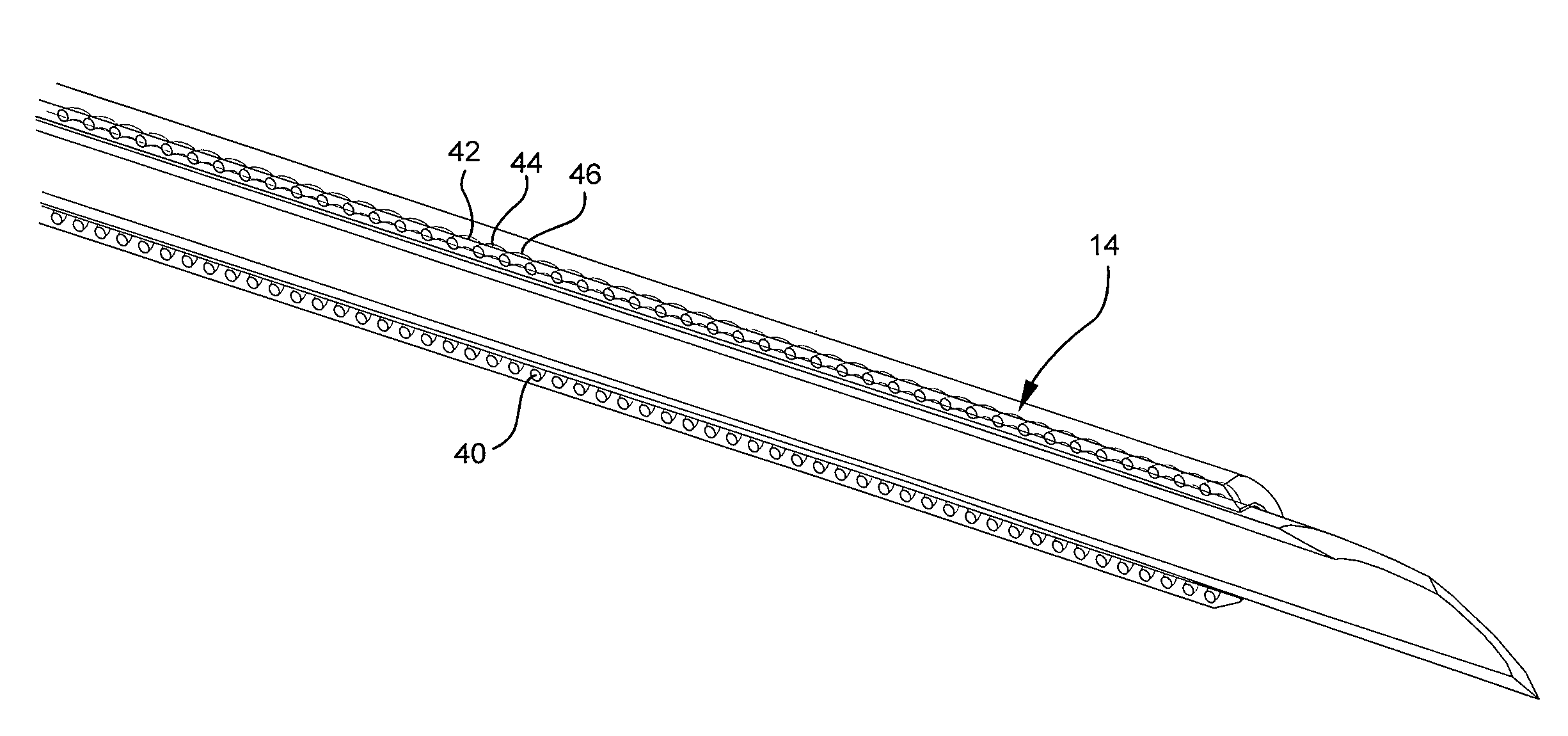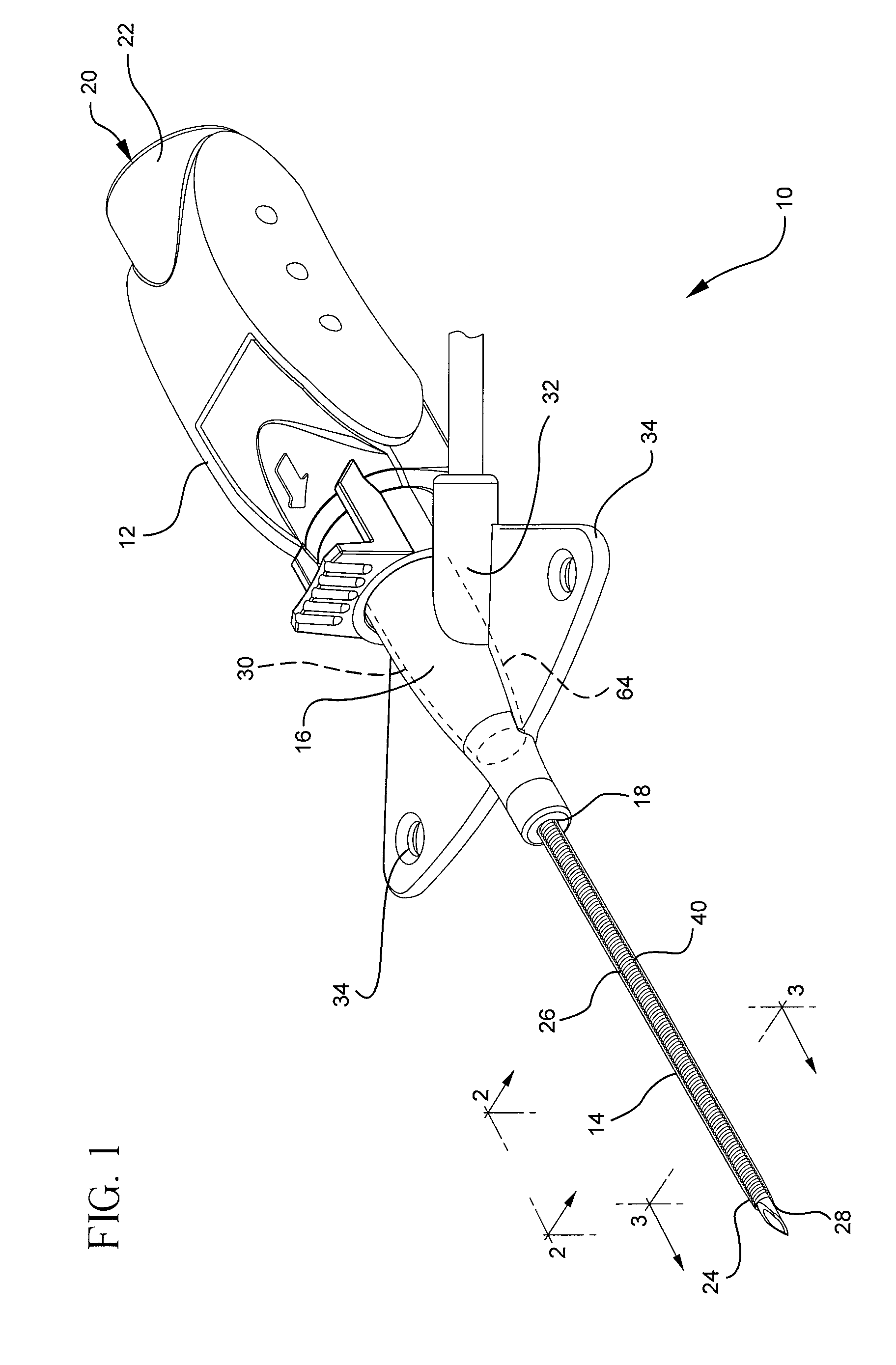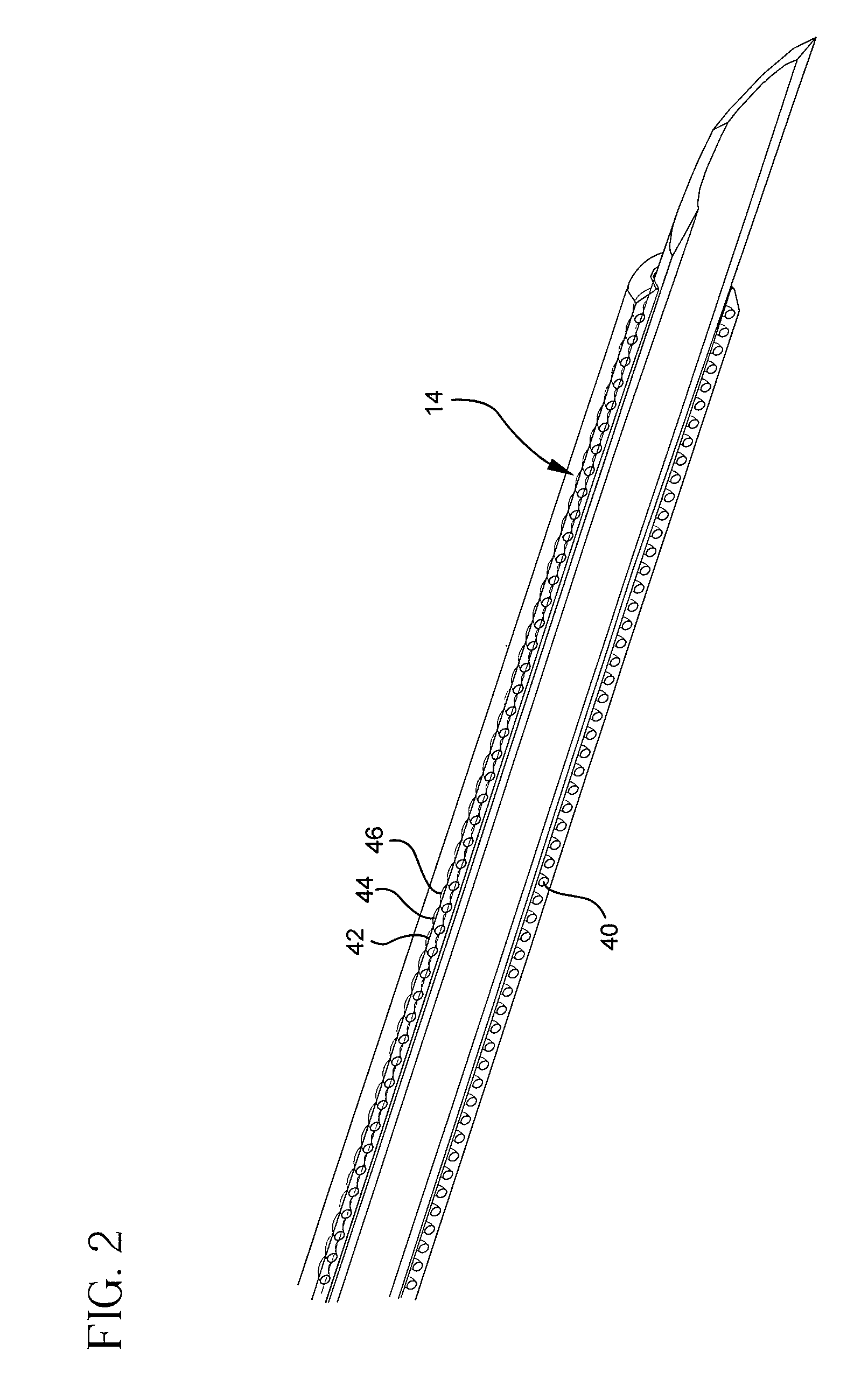Optimal radiopaque catheter
a radiopaque catheter and catheter technology, applied in the field of vascular access devices and methods, can solve the problems of catheters being difficult to detect, catheters may be detached from the catheter adapter, catheter assembly may malfunction, etc., and achieve the effect of facilitating and facilitating infusion procedures
- Summary
- Abstract
- Description
- Claims
- Application Information
AI Technical Summary
Benefits of technology
Problems solved by technology
Method used
Image
Examples
Embodiment Construction
[0023]The presently preferred embodiments of the present invention will be best understood by reference to the drawings, wherein like reference numbers indicate identical or functionally similar elements. It will be readily understood that the components of the present invention, as generally described and illustrated in the figures herein, could be arranged and designed in a wide variety of different configurations. Thus, the following more detailed description, as represented in the figures, is not intended to limit the scope of the invention as claimed, but is merely representative of presently preferred embodiments of the invention.
[0024]Referring now to FIG. 1, a catheter assembly 10 is illustrated. The catheter assembly 10 comprises a catheter adapter 12 and a catheter 14. The catheter adapter further comprises a generally tubular body 16 coupled to a first end 18 of the catheter 14. As configured, a lumen 30 of the catheter adapter body 16 is in fluid communication with a lum...
PUM
 Login to View More
Login to View More Abstract
Description
Claims
Application Information
 Login to View More
Login to View More - R&D
- Intellectual Property
- Life Sciences
- Materials
- Tech Scout
- Unparalleled Data Quality
- Higher Quality Content
- 60% Fewer Hallucinations
Browse by: Latest US Patents, China's latest patents, Technical Efficacy Thesaurus, Application Domain, Technology Topic, Popular Technical Reports.
© 2025 PatSnap. All rights reserved.Legal|Privacy policy|Modern Slavery Act Transparency Statement|Sitemap|About US| Contact US: help@patsnap.com



